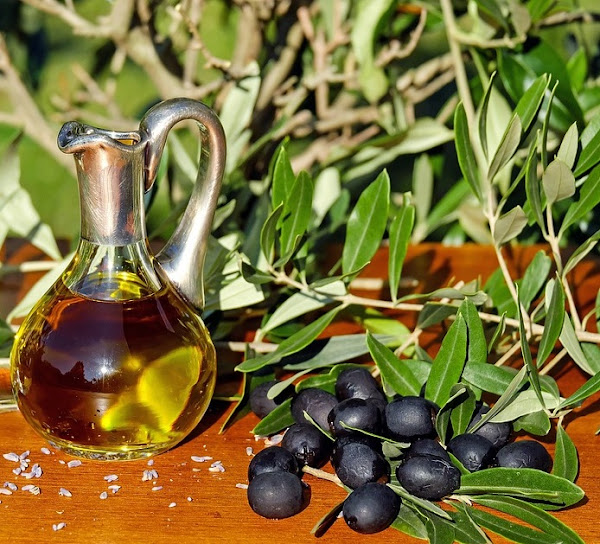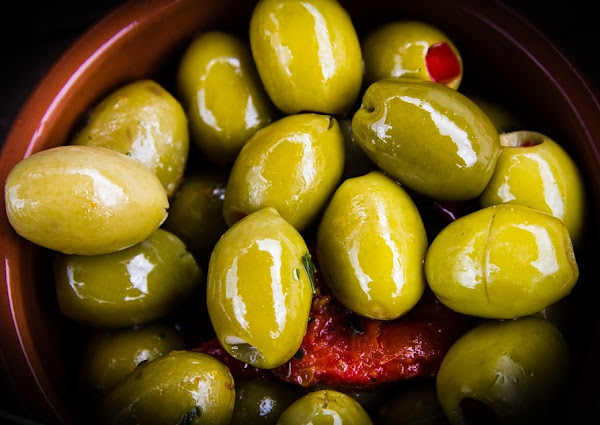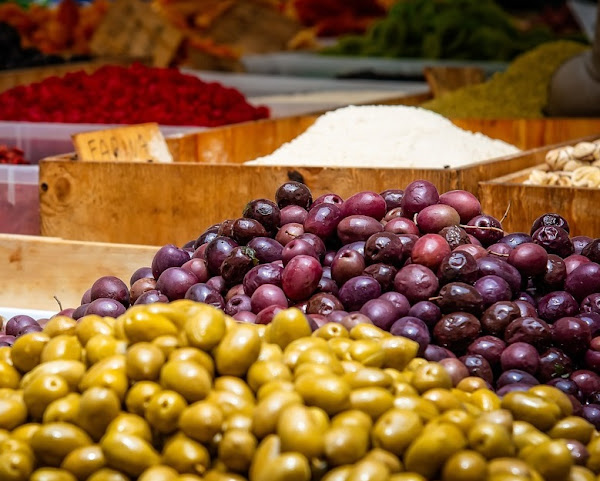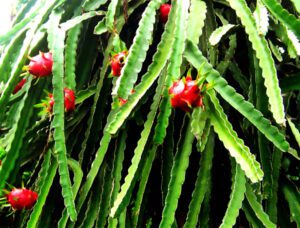Commercial olive farming is a very old and popular business in many countries throughout the world. It’s a very easy but highly profitable business. Olive plants are cultivated mainly for olive oil, fine wood, olive leaf, olive fruit and also for ornamental purpose. But the main purpose of commercial olive farming is the production of olive oil.
The olive (Olea europaea) is actually a species of small tree or shrub in the family Oleaceae, which is found traditionally in the Mediterranean Basin. When in shrub form, it is known as Olea europaea ‘Montra‘, dwarf olive, or little olive. Commercial olive farming is done and very popular in all the countries of the Mediterranean, and also in New Zealand, Australia, South Africa and in both North and South America.
Olive (olive fruit) is a very important agricultural crop in the Mediterranean region as the source of olive oil. And olive oil is one of the core ingredients in Mediterranean cuisine. The tree and its fruit give their name to the plant family, which also includes species such as lilac, jasmine, forsythia, and the true ash tree.[1]
Currently there are numerous cultivars of the olive tree available throughout the world. And these cultivars may be used mainly for oil production, eating or for both. The olive cultivated for direct consumption purpose are generally referred to as ‘table olives’. About only 10% of the harvested olives are used as table olives, while about 90% are turned into oil.
Olives are actually one of the most extensively cultivated fruit crops in the world. And most of these commercial operation is done mainly for olive oil production purpose. In 2011, about 24 million acres were planted with olive trees, which is more than twice the amount of land devoted to apples, bananas, or mangoes. Only coconut trees and oil palms command more space.
Top olive producing countries are Spain, Greece, Italy, Turkey, Morocco, Syria, Tunisia, Algeria, Egypt and Portugal. Major olive producing countries are in Mediterranean region and they produce about 95% of the world’s total production. However, commercial olive farming is a very common and popular business. It’s a very easy and profitable business. You can start commercial olive farming business easily for making good profits.

How to Start Olive Farming?
Starting commercial olive farming business is just like starting other fruit farming business. It’s very easy and simple and the beginners can also start this business easily. Although we recommend having practical experience from existing farmers. Here we are trying to describe more information about starting commercial olive farming business from planting, caring to harvesting and marketing.

Site Selection
Selecting a very good and suitable land for olive farming is very important. Olive plants can be cultivated in a wide range of soil types. The plants generally require deep, rich and well drained loamy or clay loam soils for best growth and maximum production. Soil pH range between 6 and 7.5 is considered ideal for good growth and maximum yields.
Prepare the Soil
Prepare the soil perfectly before planting the small plants. 2-3 ploughing will be enough, and add as much organic contents as you can at the time of last ploughing.
Climate Requirement For Olive Farming
Warm climate to subtropical conditions are required for commercial olive farming business. The optimum temperature range for good production is between 15° C and 20° C. Prolonged dry and hot spells with water stress is not favorable for olive farming due to fruit drop. These plants require about 100 cm of well distributed rainfall during their growth period. The plants are also sensitive to frost conditions.
Best Time For Olive Cultivation
January to February is the best time for planting in the irrigated areas, and July to August is best for planting in no irrigation and prolonged drought areas. And planting should be delayed in heavy rainy areas.
Choose a Variety
There are more than hundreds of olive cultivars available throughout the world. All these cultivars differ in size, color, shape, growth characteristics and also the qualities of oil. Consult with an existing farmer in your area for having better recommendation.

Propagation
Propagation can be done through seeds and cuttings. The preferred ways are cuttings and layers; the tree roots easily in favorable soil and throws up suckers from the stump when cut down. However, yields from trees grown from suckers or seeds are poor; they must be budded or grafted onto other specimens to do well. The olive plants are also sometimes grown from seeds. The oily pericarp is first softened by slight rotting, or soaked in hot water or in an alkaline solution to facilitate germination.
Purchase Plants
However, if you want to avoid germination and want to avoid the hassle of producing new plants, then you can purchase plants from the nurseries.
Planting
You can done planting of the olive plants in January to February in the irrigated areas, and wait planting till July to August in no irrigation and prolonged drought areas. And planting should be delayed in heavy rainy areas. The olive trees are highly sensitive to water stagnation. So ensure providing the plants with proper drainage in case of heavy rains and flooding. Planting distance should be around 8 meters for fertile deep soils with adequate irrigation facility. And this system will be enough to accommodate about 150 trees per hectare land.

The planting distance should be between 6 and 7 meters for semi dwarf rootstocks and this system will accommodate 250 to 300 trees per hectare land. And the planting distance should be between 6 m x 5 m or 8 m x 5m in rectangle planting method. And this method can accommodate between 250 and 330 trees per hectare.

Caring
The olive plants are very strong and hardy and they require less caring and other management. Although, taking additional caring will ensure good growth of the plants and maximum yields.
Fertilizing: Apply 10 kg farm yard manure per tree per year and N:P:K at the rate of 75:50:50 grams per tree. Apply 300 grams super phosphate per tree and 300 grams calcium ammonium nitrate.
Watering: Adequate irrigation will help the plants to grow well and produce more fruits. The olive trees generally require about 100 cm well distributed rain throughout their growth. Irrigate the plants in hot and prolonged dry conditions as needed. Irrigation is a must 1 month before expected flowering and after 2 weeks of blooming period. And one irrigation should be carried a month after fruit set to stimulate fruits development.
Mulching: Mulching helps to retain moisture into the soil. And at the same time it also helps to prevent most of the weeds. You can use both plastic and organic materials for using as mulch.
Controlling Weeds: Controlling weeds is very important in commercial olive farming business. Because weeds consume nutrients from the soil and the olive plants will suffer. Regular manual weeding and mulching will prevent most of the weeds. So, try to perform manual weeding on a regular basis.
Pruning: In case of fruits bearing trees, pruning should be carried out immediately after harvesting. Doing this will encourage new growth. Removing of dead and injured branches should be done regularly.
Intercropping: You can cultivate any legume crop or vegetable like tomato, onion, chilli as an intercrop. This will give you some extra income during the first few years before the trees starts commercial production of olives.
Control Pests and Diseases
Like many other commercial crops, the olive trees are also susceptible to some pests and diseases. Common diseases of the olive plants are verticillium wilt, root rot, phytophthora crown, peacock spot, olive knot, diplodia canker and leaf spot. Contact you local horticulture or agriculture department for more information.
Harvesting
Timely harvesting of olives is very important, because harvesting immature olives will decrease both quality and quantity of olive oil. Hand picking is the most common and most desirable method of olive harvesting. But it is an expensive and slow process, so you can also go for mechanical method as it impacts the oil quality. The right time to harvest olives is when oil with a pleasant aroma and good quality is obtained without much bitterness.

Yield
Exact number depends on numerous facts such as soil, climatic conditions, planting method, cultivar and crop management system. Generally you can expect between 22 and 25 percent oil content from the stones.
Marketing
Marketing olive and olive products is very easy and simple. You can easily target your local market for selling your products. Although, you should set your marketing strategies before starting this business.
These are the common steps and ways for starting and operating a successful olive farming business. Hope this guide has helped you! Good luck and may God bless you!







I want to start banana farmimg
Please review our banana farming guide. Thank you!